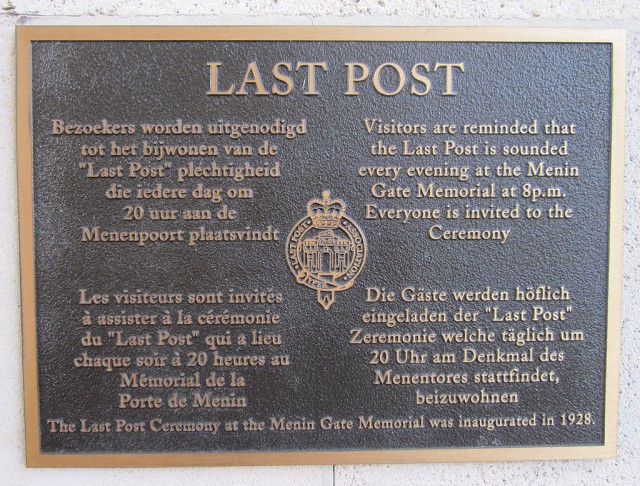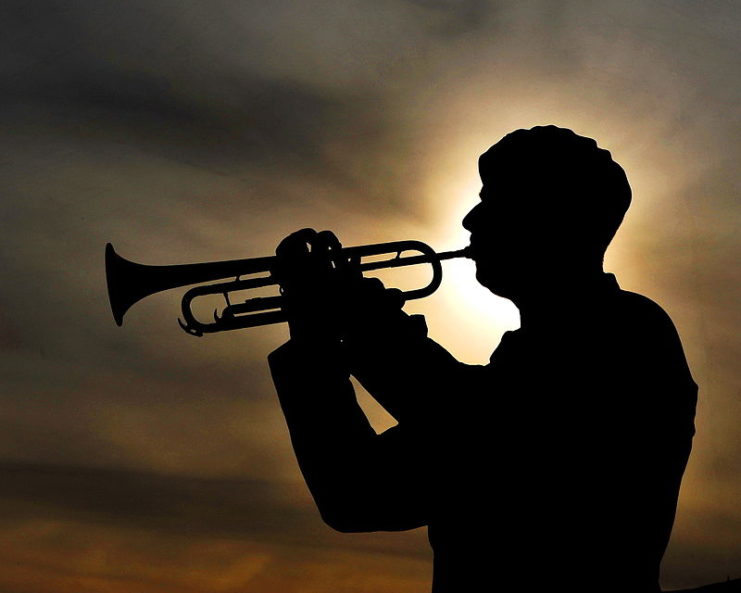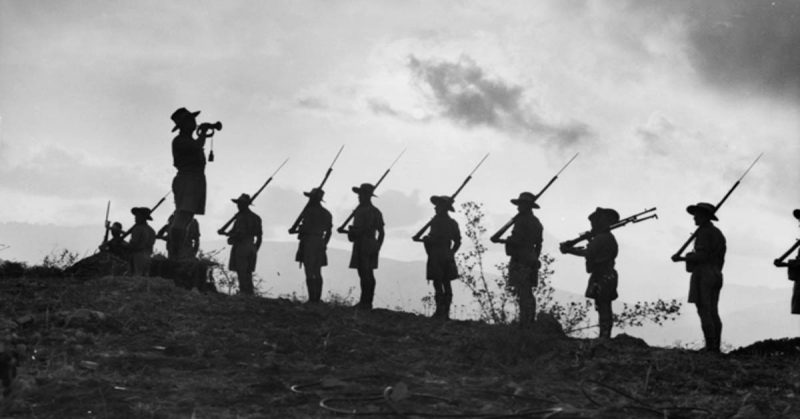Chances are, you have heard the notes of the Last Post. The lone notes, played by a military bugler, trumpeting the notes of the song of the lost, the fallen, the dead. Though you may have no experience within the ranks of your nation’s military, and you may not have stepped foot upon a battlefield, the forefront of war zones, or even participated in military efforts, it is a song that resonates throughout the history of countries around the world.
The Last Post is played to mourn the dead, to honor those lost in wars, skirmishes, and battles both near to home and in far-flung locales. If you have heard its soft, melancholy, and mournful notes, it is a familiar to tune — most familiar to those who have served their country.
Today, the Last Post is played in commemoration of battles wars. It is played on Remembrance Day, on Anzac Day, sounded at the sites of memorials in the United States, and serves as the background song at the funerals and memorials of those lost in service to their country worldwide. It is not a song originally intended to serve such a mournful, sad purpose, yet over the course of its history, the Last Post has changed in both how and when it is played. This is the song’s lengthy legend, the story of its very first notes and how it has evolved over centuries of war, death, and military involvement in Europe and abroad.
The Beginnings of The Last Post
The Last Post is a song that has been around for hundreds of years, its sound one of the most distinctive in existence. Citizens and members of militaries worldwide are able to recognize its somewhat haunting, poignant notes, played by a single bugler. It is a tune that bonds humanity together, slipping past the country, city, and religious lines that divide all. That familiar and recognizable tune carries the names, the faces, and the memories of all who have died in wars throughout history.
Although the Last Post has come to carry such mournful weight and meaning, it was not originally used in a memorial context. In fact, the Last Post was just a simple song in its very first years. First published and played in the 1790s, the Last Post was one of many bugle calls used by the British Army.
These calls were used to help soldiers keep track of time when living in encampments. Each sound of the bugle instructed British soldiers, with different “songs” or notes letting them know if it was time to wake for the day, time to enjoy a meal, time to partake in military exercises, or time to turn in for the night. Every day in camp was regulated and run according to the calls of the army’s bugler.
Typically, soldiers’ days began with buglers playing Reveille, the daily wakeup call, and ended with the sounds of the Last Post. When played in camp, the Last Post signaled that the duty officers had completed their sentry-post inspection around the encampment’s perimeter. So, the Last Post earned its name simply because it was sounded to signal that the last of these posts had been inspected. For a number of decades, the end of such a security check was the only time during which the bugle call would be heard. It was simply the sound that let soldiers know their days were completed, and their location was secure.
It was not until the mid-1800s that the Last Post changed in its use and significance. More than half a century after its inception and use in British army encampments, the bugle call took on greater importance. Warfare had changed throughout the international community — no longer were all wars fought upon the sturdy soil of battlefields. The sea itself became a new battlefront, and many militaries sent their fighting men off to war on boats.
However, this meant that fewer army necessities could accompany an army to battle. Because military bands and their bandmasters were considered civilians, not soldiers, buglers and the like typically did not accompany an army headed out to sea or overseas locations. Typically, the bands that followed an army in times of battle or war were there to play songs to accompany all who died in their final journey home. However, with increasing numbers of soldiers lost in faraway cities and upon overseas battlefields, this tradition could not be continued.
So, military bands devised a new tradition: playing the notes of the Last Post at the gravesite of those who died in battle. In turn, the bugle call took on a new, mournful meaning. As it played during soldiers’ funerals, it no longer signaled the end of an average; instead, it came to symbolize the end of a soldier’s life on Earth and the end of his service to his country.

The Years of the Great Wars of the 20th Century
The legacy of the Last Post did not end when it took on new meaning and a new purpose in the 19th century. Instead, as countries entered the 20th century, this simple bugle call and its notes became, even more, important during this era of large-scale wars. As soon as the 1900s began, the Boer War came to a close. With the war’s end, more than 600 memorials appeared to remember those who lost their lives in England. Before this, no war memorials were ever built; in prior times of conflict, battle, and death, the British only celebrated the victors by crafting statues dedicated to or resembling successful generals and commanders.
After the Boer War, however, the British began building memorials listing the names of all who died — even the officers, soldiers, and generals who fought on the side of the opposition. Views of wars and their battles changed forever, and with each new memorial that appeared throughout England’s cities and countryside towns, so did the tradition of the Last Post. Whenever a memorial was erected, its final design unveiled, a soldier played the notes of the Last Post, symbolizing those whose names covered the memorial’s surface would always be remembered.
Soon after the latest change in both postwar traditions and the Last Post, World War One exploded in Europe. By this time, the Last Post was known to not only soldiers but by all who visited memorials and attended military funerals. Over the course of World War One, the Last Post was repeatedly played — its tune was heard at funerals in Europe, at memorials in soldiers’ hometowns, and during moments of remembrance for battles and those lost during them.
As the war dragged on and grew in scope, the Last Post became both a familiar and recurring tune. No longer was it heard solely by soldiers’ ears; it came to signify remembrance of military members for civilians as well.
By the end of World War One, societies around the world adopted the Last Post as the song of mourning and remembering their dead, their lost loved ones. As increasingly more wars, from World War Two to smaller civil wars, broke out throughout the international community during the years of the 20th century, the Last Post played for all who gave their lives.
The Tradition and Legacy Continue

Though the Last Post has come to represent so much in the history of militaries, nations, peoples, and wars, it is a tune that did not originate with such lofty goals. Over centuries, the simple bugler’s call, the sound that signified the end of a soldier’s day, took on so much meaning.
Since its inception in the late 1700s, it has been incorporated into the funeral, and military services of all who give their lives for their countries symbolizes that their duty on Earth has come to an end. With the notes of the Last Post, a soldier is able to rest in peace, to move beyond the physical world. Yet in its many years of service to both military members and civilians, the Last Post has not changed at all in its song.
While the music of the Last Post remains the same, it is performed in a slightly different manner than it originally was. Its notes have lengthened, its pauses are longer, and its tune is mournful and sorrowful. It no longer spans just 45 seconds but is played for 75 seconds. Most commonly, when it is played at a funeral or memorial, the Last Post is ended with a moment of silent prayer, then followed by the notes of Reveille, a soldier’s call to begin the new day.
Although the soldiers who fall victim to battles and war cannot begin another day on Earth, they are sent into their eternal lives with the symbolism and sound of the Last Post and their very first bugle call.
The Last Post Under the Menin Gate in Ypres
Canadians at The Last Post Ceremony on May 3rd, 2010 at Menin Gate, Ypres (Ieper), Belgium, with thousands of high school students in attendance. Filmed during the ‘Victory In Europe Tour’ from ‘Paris to Berlin’ through EF Tours.
